For the first time since 1916 when Pancho ‘La Cucaracha’ Villa and hundreds of revolutionary gangbangers (los Villistas) stormed the southern border to sack the New Mexico town of Columbus, America is experiencing — our government claims — a land invasion.
The intervening century-plus has been quiet, too quiet, on the invasion-front — but not now. No sir. As the White House has proclaimed, and as long awaited by legions of brothers-in-prepping, the red dawn has come. Venezuelan irregulars are invading! In the form of Tren de Aragua (Aragua Train), a prison-spawned gang turned, by political magic, into a designated invading-terrorist-organization.
According to the White House’s “Invocation of the Alien Enemies Act Regarding the Invasion of The United States by Tren de Aragua”, there is evidence that “irrefutably demonstrates that TdA has invaded the United States and continues to invade, attempt to invade, and threaten to invade the country; perpetrated irregular warfare within the country; and used drug trafficking as a weapon against our citizens.”
Wow, evidence!
The White House has asserted that TdA is in cahoots with the Cártel de los Soles (Cartel of the Suns), a “narco-terrorism enterprise” directed by the commie regime in Caracas and which takes its name from the semi-solar pattern on Venezuelan military patches.
Apparently, in TdA’s ongoing guerrilla campaign, the Latino terrorist group “commits brutal crimes, including murders, kidnappings, extortions, and human, drug, and weapons trafficking.” Furthermore, “TdA has engaged in and continues to engage in mass illegal migration to the United States to further its objectives of harming United States citizens, undermining public safety, and supporting the Maduro regime’s goal of destabilizing democratic nations in the Americas, including the United States.”
Crimes these thugs do certainly commit, but the assertion that TdA is waging an insurgency against the U.S. in concert with Caracas is nonsense.
And America’s own National Intelligence Council disagreed with the White House, stating in a now-declassified April memo that “while Venezuela’s permissive environment enables TDA to operate, the [President] Maduro Regime probably does not have a policy of cooperating with TDA and is not directing TDA movement to, and operations in, the United States.”
But here comes the rebuttal, and what happens when the Trump Administration doesn’t like what they’re told.
“They’re wrong,” Secretary of State Marco Rubio told Face the Nation about the National Intelligence Council findings. The officials who oversaw the memo, Mike Collins and Maria Lagan-Riekhof, have since been fired by Tulsi Gabbard, Director of National Intelligence — oxymoron notwithstanding, that’s actually her title.
Maybe her Council will now start getting it right! Probably!
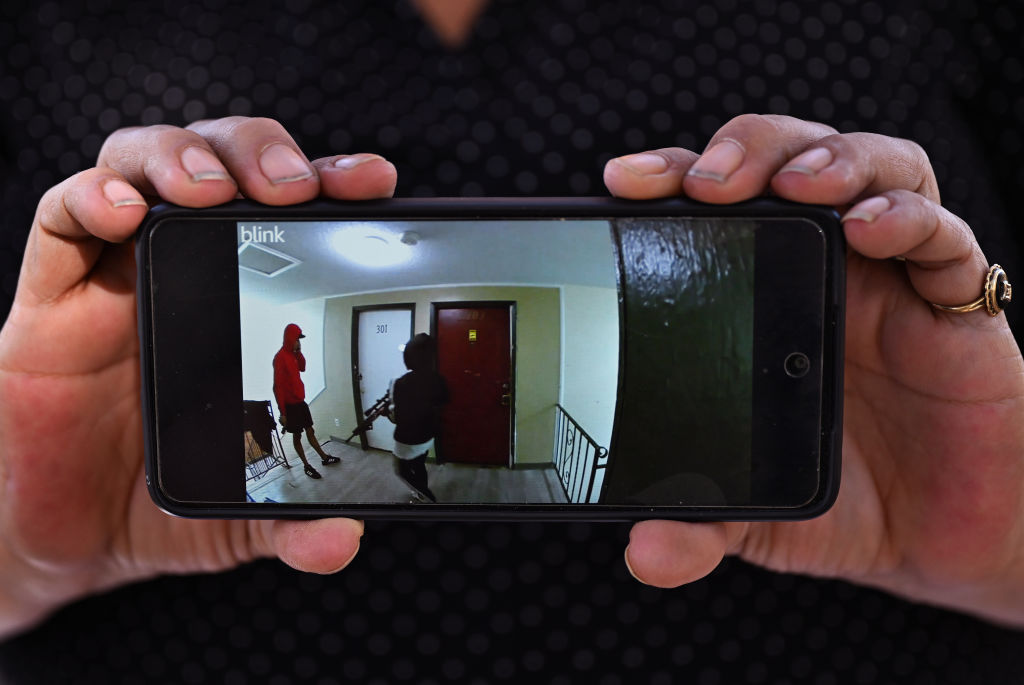
TdA is the group notorious for 2024 doorbell footage from an Aurora, Colorado slumblock housing numerous Venezuelans, showing an armed squad of gangbangers sweeping the halls and gaining entry to an apartment ten minutes before a man was fatally shot outside the building. A Venezuelan woman, sick of the rampant and brutal criminality, and sick of fellow residents keeping their mouths shut about it, released similar security footage only for her and her partner to get abducted, beaten, and tortured in retribution.
According to Homeland Security Assistant Secretary Tricia McLaughlin, “Tren De Aragua is one of the most violent and ruthless terrorist gangs on planet earth. They rape, maim, and murder for sport.”
But it’s not entirely true. The truth is, while chapters and networks persist amongst Venezuela’s diaspora, particularly in Colombia, Peru, and Chile, where domestic security forces have arrested hundreds of members in the past few years, back in Venezuela they’re actually a washed up gang, and their ranks are dwindling.
At its peak a few years ago, TdA had an estimated 3,000 members in and outside Venezuela, according to investigative journalist Ronna Rísquez (who wrote the book on the gang — literally). In contrast, a 2023 study in Science estimated that Mexican cartels directly employed up to 185,000 people (with countless more deeply involved) and were recruiting between 350 and 370 per week. And what’s more, the major cartels field substantial paramilitary forces that have proven capable of matching it with police. And MS13 — Central America’s doodle-faced Monsters Inc. — has membership in the tens of thousands, and remains potent outside its now unwelcoming heartland of El Salvador.
Back when Venezuela’s exodus was largely spreading throughout South America, Tren de Aragua enjoyed substantial parasitic leverage but as the flow shifted north to an open-bordered U.S., the gang could at best be only a junior partner to the armed groups whose shadow states they had to traverse.
Tren de Aragua ain’t invading America.
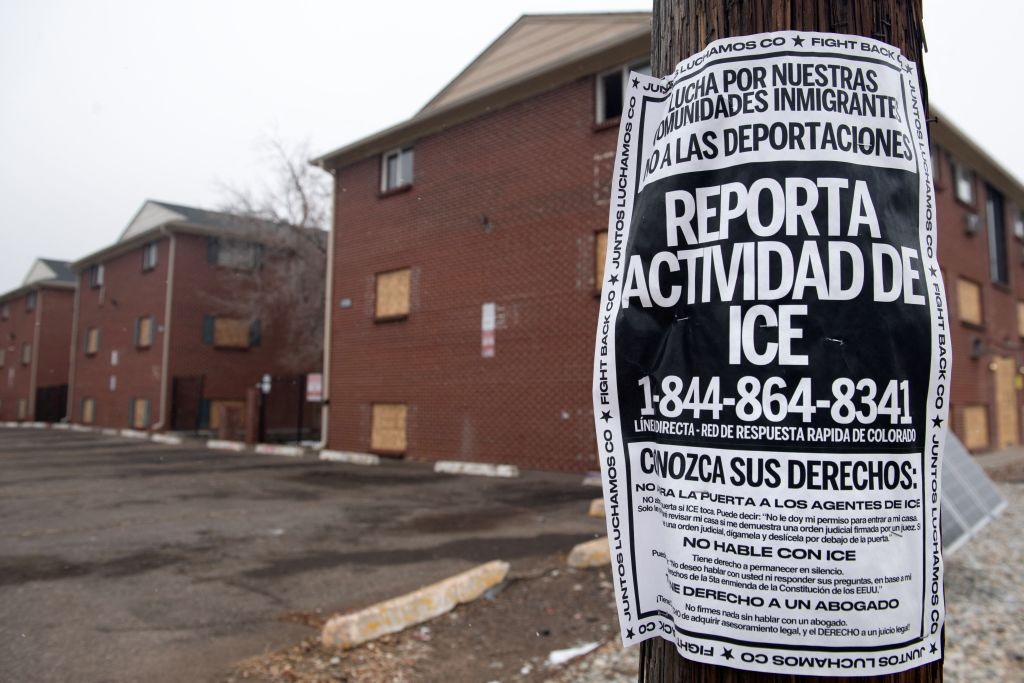
So, one could be excused for finding the Trenpocalypse a little… underwhelming. And confusing. The reported murders, torture, extortion, pimping, drug dealing, and general shithead thuggery associated with TdA in the U.S. are inarguably serious but do not appear competently orchestrated at a high level — if coordinated at all. This Cártel de los Soles that’s supposedly in charge might want to go back to cartel school, terrorist school, or Special Warfare School, and try again.
Understanding the TdA phenomenon (beyond the trails and clusters of grubby crimes) as it relates to the U.S. requires a grasp of parallel circumstances. One is Venezuela and what has happened there over the past quarter century, and the other is los Estados Unidos — us — and why in comparison to other developed nations this country is, by a great many measures, what Donald Trump might call a “shithole.”
America’s homicide rate leaves for dust those of the other nations in the G7 (the world’s leading industrialized democracies). Lifespans here are the lowest in the G7, as is the percentage of income that people save, while the rate of people living on the streets or along rivers and under bridges is the highest. Drug use gets a Gold Medal, too, with bell-ringing rates of use, downtowns around the country that resemble Walking Dead sets, and mind-boggling death tolls from overdoses. We have prison gangs with membership in the thousands and have Mexican cartels entrenched here. We have slums and ghettos where talking to cops is against local codes, or simply too dangerous. Our capitol even got sacked — muy Banana Republic!
Until very recently we had all manner of incentives and enablement for mass illegal immigration, including but not limited to a wide open border, and uncounted millions crossed in a few years.
For us citizens, medical bills routinely drive people into penury under the joke of a health ‘system’ — no wonder Luigi Mangione is a folk hero. Where I live, Oregon, more than a third of school kids are chronic truants. Academic researchers have even tracked a decline in American IQs — reversing the historic trend. One woman in her late ’20s I worked with here, a mother of three kids, asked me what “quarter to eight” meant when I’d mentioned the time. Turned out she had never learned to read a fucking clock. And here the response to mass stupidity seems most always to be lowering standards to match. Not to generalize, but we’re a pack of ill-educated spendthrifts trashed out of our minds.
In her 1987 book, Miami, Joan Didion depicts that city — with its then rampant murders and recent history of car bombings and assassinations spilling into Florida from the South’s clashes and tensions — as the de facto capital of Latin America.
Such things happen here in part because they fit here. We are closer to, and more interchangeable with, the so-called Third World than we dare face. A few paragraphs back I was about to write that TdA gangbangers and their crimes have no place here — but then I realized, sadly, that on the contrary, they fit neatly into America’s “permissive environment.”
And, of course, invasion is a pretext to bypass the paralyzing legal morass of trying to deport millions of illegal immigrants without it taking centuries.
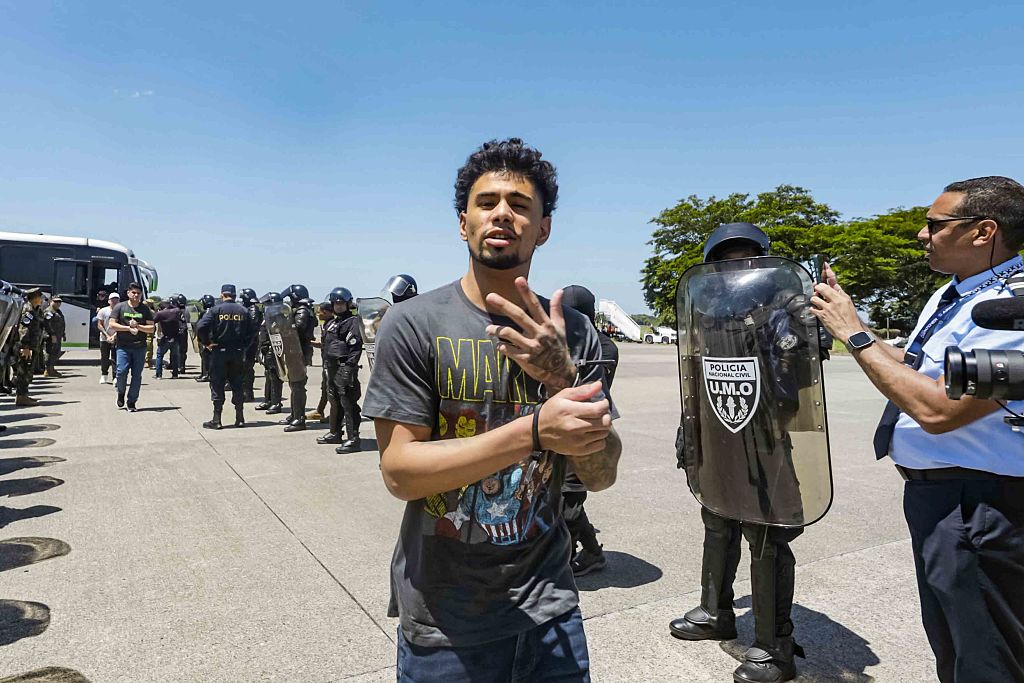
But the American sinkhole is too much to deal with here and now. So instead let’s look at Venezuela.
A man well placed to illuminate the murky situation down south is the International Crisis Group’s Phil Gunson, Senior Analyst, Andes Region. Gunson has lived in Caracas since 1999, from the beginning of the epoch-shaping reign of Maduro’s predecessor, attempted-coup-leader-turned-president Hugo Chavez, through the explosion in violent crime that later engulfed the country, the political repression and unrest, the economic free-fall, and the exodus of an estimated quarter of the population — an exodus that includes gangbanger shitheads along with everyone else.
“I’ve seen the whole movie,” says Gunson.
But why move to such a volatile place? “I had a Venezuelan girlfriend,” says Phil.
According to the love-struck analyst, understanding Tren de Aragua requires a grasp of what’s happened in Venezuela over the past quarter century, including authoritarian populism; economic collapse tied to the ‘resource curse’ of a near total dependency on oil revenue; a breakdown in law and order and the rise of large, consolidated gangs known as megabandas, Tren de Aragua being the most powerful; then the state reasserting itself; a mass exodus of Venezuelans; and the creeping dominance of Colombian armed groups.
To Gunson, much of the story starts with Hugo Chavez, a former army officer and failed 1992 coup leader that he reluctantly agreed to meet in 1998 when Chavez was campaigning for president. “I didn’t want to meet him — nobody wanted to meet him. He was very low in the opinion polls; he was a failed coup leader; he was completely anachronistic in his whole approach.

“He acted messianic — the only man who could save the country — but denied absolutely that he had anything to do with socialism. It was more non-aligned, new-international-order kind of stuff with resource nationalism. He quoted Tony Blair. It was nothing interesting — nothing interesting at all.”
When Phil emerged from his audience with Chavez, the supporters of the candidate who had arranged the meeting asked what he thought of their man.
“I said, ‘Well, he’s really messianic but, frankly, he’s never going to be president of Venezuela. Not with that kind of line. He might make it to be a mayor but president? No way.’ And they said to me, ‘No, no, no. You’re completely wrong. You just met the next president of Venezuela.’ They were true believers.
”Their judgment was better than mine: they could see the time was right for this guy. And he won a pretty convincing election victory in 1998. But in a deeper sense I could see through him. He was a blowhard populist.
“But I didn’t know Venezuela so well at that point, and it’s a very different kind of place. If you know the rest of Latin America and, because of that, think you know Venezuela, you are completely mistaken. It’s an oil producer and the politics here are quite different from the rest of the region,” says Phil.
Politics there, like the culture, tends to ignore what has led to present problems, Phil says. “A good part of the population doesn’t have the patience for developing solutions over time — they want it done now. And that aspect of Venezuelan society matched exactly what Chavez was selling. He was selling a miracle. He was selling utopia. ‘Vote for me and everything will change. We will have a new constitution. Everything will be new. All these things that the corrupt elite are doing to you will end.’”
Enough people fell for it. Chavez took office in February of 1999, and went to town consolidating his power — overseeing convenient changes to the constitution (which also renamed the country from the Republic of Venezuela to the Bolivarian Republic of Venezuela, making a neat match with his 1992 coup force, the Revolutionary Bolivarian Movement-200), removing checks and balances, and extending how long he could hold office. He repressed journalism while hosting his own radio and TV shows and launching new, regime-supportive press outlets.
Chavez also pumped money into much needed social welfare programs and healthcare, made possible by “an enormous stroke of luck” a few years into his presidency, Gunson says. “When he came to power the oil price was really low but by 2003, 2004, it started to rise steeply and then he had a 10 year long oil boom.
“The key to Chavez’s personality is this messianic idea that he could solve everything,” says Phil. “The oil industry is state owned so once he had money then all the prices for public utilities and so on were more or less eliminated. You could travel on public transport virtually for free. Gasoline was worth nothing. Venezuela ended up with the cheapest gasoline in the world. There was a point where it was so cheap that it was more trouble for them to charge you for it than it was worth. So you’d give ’em, I don’t know, a chocolate bar, and they’d let you go.”

Lawlessness ballooned in these years. “Chavez came in with the idea that crime was a function of capitalism, and once you resolve the issues around capitalism then everything would fall into place, because criminals were really just victims,” Phil says. There was massive impunity. The justice and policing system were severely undermined. You could commit homicide and walk away.
“In those years I knew several people who were kidnapped. My wife’s uncle who was working as a taxi driver was shot by thieves. He ended up partially paralyzed. A half sister of my wife’s daughter was shot dead in another robbery. Everybody in Venezuela knows people who in that period were shot and injured or killed or kidnapped.”
Bloodletting was also rampant in the nation’s prisons, with thousands of inmates killed in gang wars. The government then ceded control of about half the nation’s prisons to each facility’s dominant gang. And thus came the time of the megabandas, the mega-gangs, the most notorious of which — Tren de Motherfucking Aragua — was spawned in el Centro Penitenciario de Aragua, AKA Tocorón, a prison in the city of Maracay, capital of the north-central state of Aragua.
By the time Chavez died of cancer in 2013, succeeded by vice president Nicolás Maduro, the country was spiraling. Caracas struggled to maintain what control it could, unleashing death squads and cracking down ever harder on dissent. In 2014, homicides exceeded 19,000 from a total population of about 30 million. More victims were hitting the ground there than in the U.S., despite the 2014 American population being ten times larger.
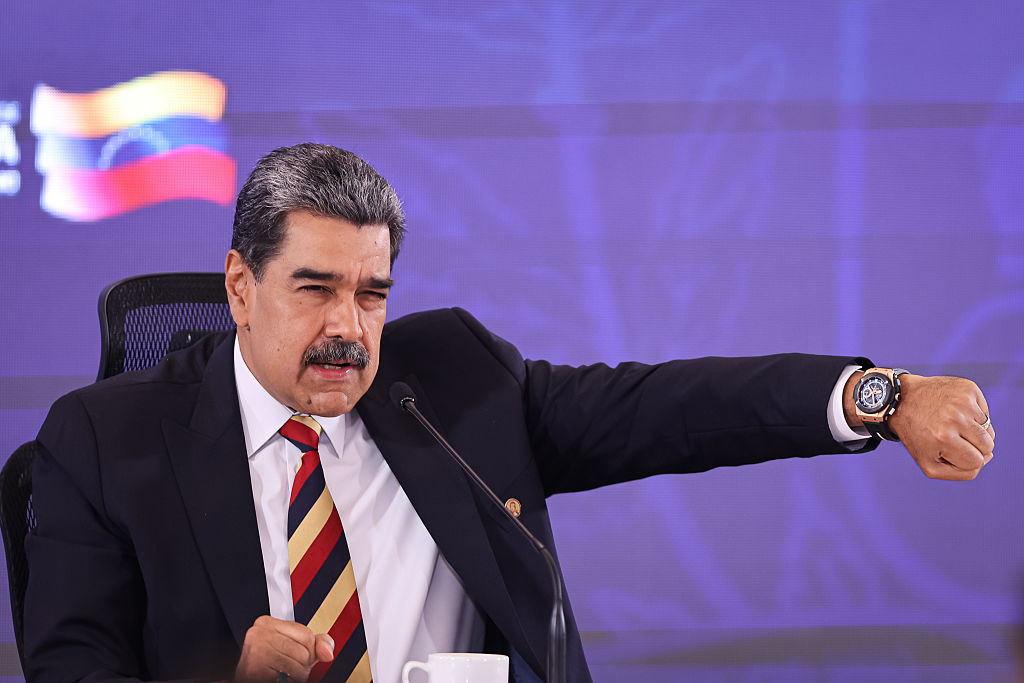
Supercharging the civil disintegration was the collapse in oil revenue from 2014 on, which caused an economic catastrophe the scale of which is hard to fathom. Up to 8 million people fled over the next decade as the economy contracted by an estimated 80 per cent. “It’s probably the largest ever economic collapse outside of wartime in any country,” says Phil, who lived through it.
“Public hospitals are in a desperate state. You don’t want to go in because you’d be worse off in the hospital unless you can afford to buy all the stuff that you need — buy the blood transfusion; buy the equipment. Most public hospitals don’t have functioning machinery. So if you’re in bad shape to begin with, you’re not likely to come out alive,” says Gunson.
Prisons, like other government-run institutions, were so under-resourced that they fell into a disastrous state: anarchic and brutal, with a death toll in the thousands. Matching a broader government policy of so-called Peace Zones, which sought to reduce violence by letting local criminal syndicates police their own areas uncontested, prison administrators in much of the country effectively ceded control of their facilities to gangs. In Tocorón, that gang was Tren de Aragua, the boss of which was Héctor Rusthenford Guerrero Flores, AKA Niño Guerrero, whose rap sheet included multiple counts of murder along with kidnapping, extortion, robbery, bribery, and more. An H.R. dream.
And with the country in turmoil, TdA not only weathered the storm but consolidated and grew, its prison functioning not just as an H.Q., but as a relatively well-resourced small town (a disco, pool, stores, zoo, womenfolk, and more) and an armory boasting even machine guns and explosives.
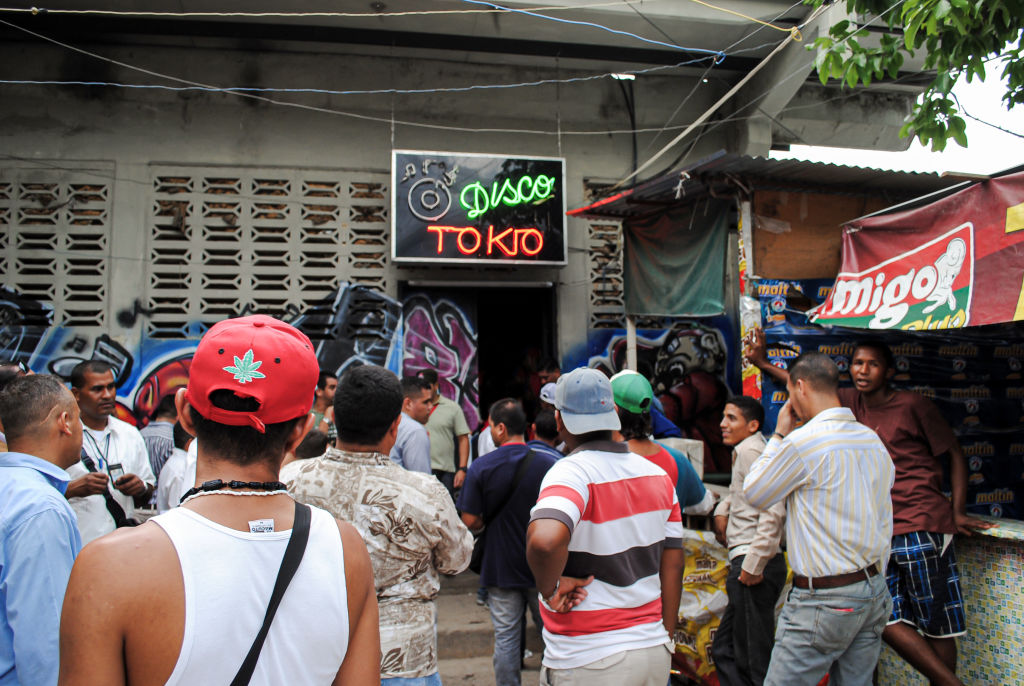
Outside Tocorón, in the nearby ‘civilian’ neighborhood of San Vincente, life was relatively orderly, controlled as it was by the gang: dress codes; no drugs; strict discipline in schools; homes and yards must be well lit and have plants. Other neighborhoods of Maracay were also TdA communities.
Further afield TdA members outmuscled or absorbed other gangs in several states and took over crosspoints on the Colombian border to the west, ‘taxing’ the exodus and clashing with Colombian armed groups. The gang killed for money, and expanded into Venezuela’s wild and wooly mining regions, taking its cut from the extraction of gold and other precious metals. Members went abroad with the exodus, notably to Bogotá, the Colombian capital, but also to Peru, Chile, Ecuador, and elsewhere — like vampire bats chasing the herd. They trafficked migrant women and carried drugs.
Inside Venezuela, the state eventually reasserted itself.
“At some point, the people in charge of internal security decided that there needed to be more control,” says Phil Gunson. “And the prisons were the basis for a lot of these armed organizations like TdA.”
In 2023 the government deployed more than 10,000 troopers to retake Tocorón. Although the gang leadership, most notably el jefe Niño Guerrero, checked themselves out as, or before, security forces set in, the reconquista did much to destroy TdA as a coherent, hierarchical, organized force in Venezuela.
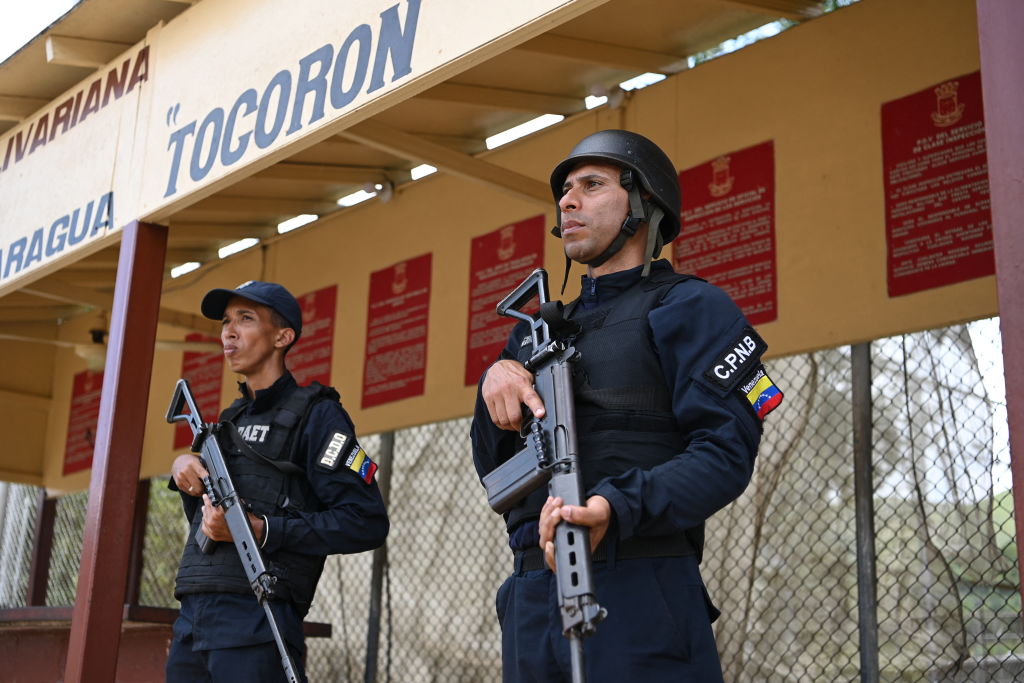
Death squads, explains Gunson, “go into the barrios and they’re hooded, dressed all in black, carrying long guns, and they round up youth who are suspected of being gang members or whom somebody’s denounced, and they shoot them.”
All of which fuels the exodus not only of peaceful, conscientious members of Venezuelan society, but also the thugs and hoodlums — people with few qualms about pimping, peddling, and overrunning Colorado slumblocks.
Gunson says the number one factor in the dissolving of the megabandas at home and dispersal abroad was the economic freefall and resulting population loss. “They were following the business, really. It’s absolutely untrue to say that Tren de Aragua was deliberately unleashed by Maduro on the United States in large numbers to create mayhem. There are certainly groups within Chile, Peru, Colombia, Ecuador — half a dozen countries up and down the Americas — which call themselves TdA, but I can’t find any evidence that they’re vertically controlled anymore. They’re increasingly autonomous. And many have no connections with TdA at all, but Trump using the name now serves the purpose of putting the fear of God into people.”
And while these diasporic vestiges of TdA, or their imitators, prey on their countryfolk in neighboring countries, the criminal vacuum at home has been getting solidly filled by the much more formidable, long-established, and battle-hardened guerrilla and paramilitary forces of Colombia.
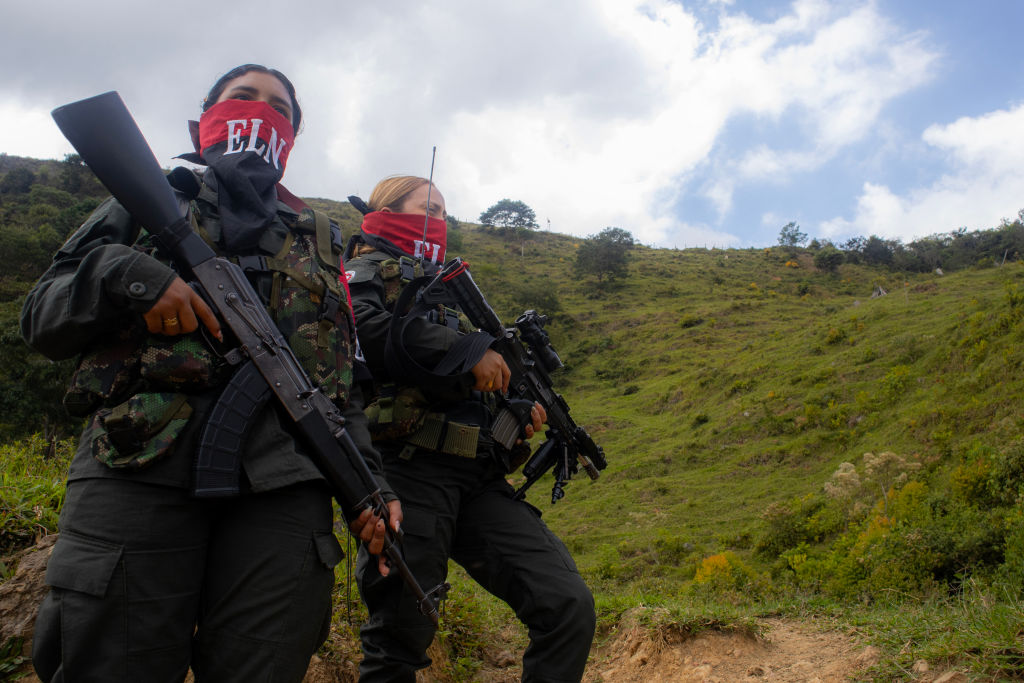
“If you were looking for the most significant armed organizations running criminal activities in Venezuela right now, it would be the Colombian guerrillas,” says Phil, pointing to the Ejército de Liberación Nacional (National Liberation Army) as the preeminent outlaw force. Founded in 1964 as armed exponents of Catholic liberation theology, the ELN now clashes with Venezuelan security forces in some areas while having cosy relations with them in others.
Venezuela is a weak state with a patchwork of corrupt arrangements. The ELN’s influence is most overt in areas bordering Colombia and regions mining gold and coltan, but it extends right across the country. Says Phil: “You could go west to east through Venezuela and almost always be in areas under the guerrillas.”
So by stealth if not storming operations, it’s Venezuela that is undergoing something of an invasion. Whereas the USA, as so often the case when it comes to wild, self-serving stories, is high on its own supply of terroristic and self-destructive forces.


Leave a comment